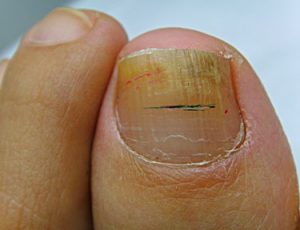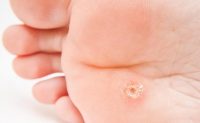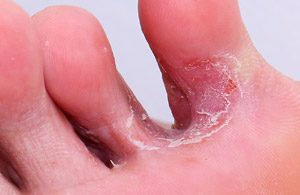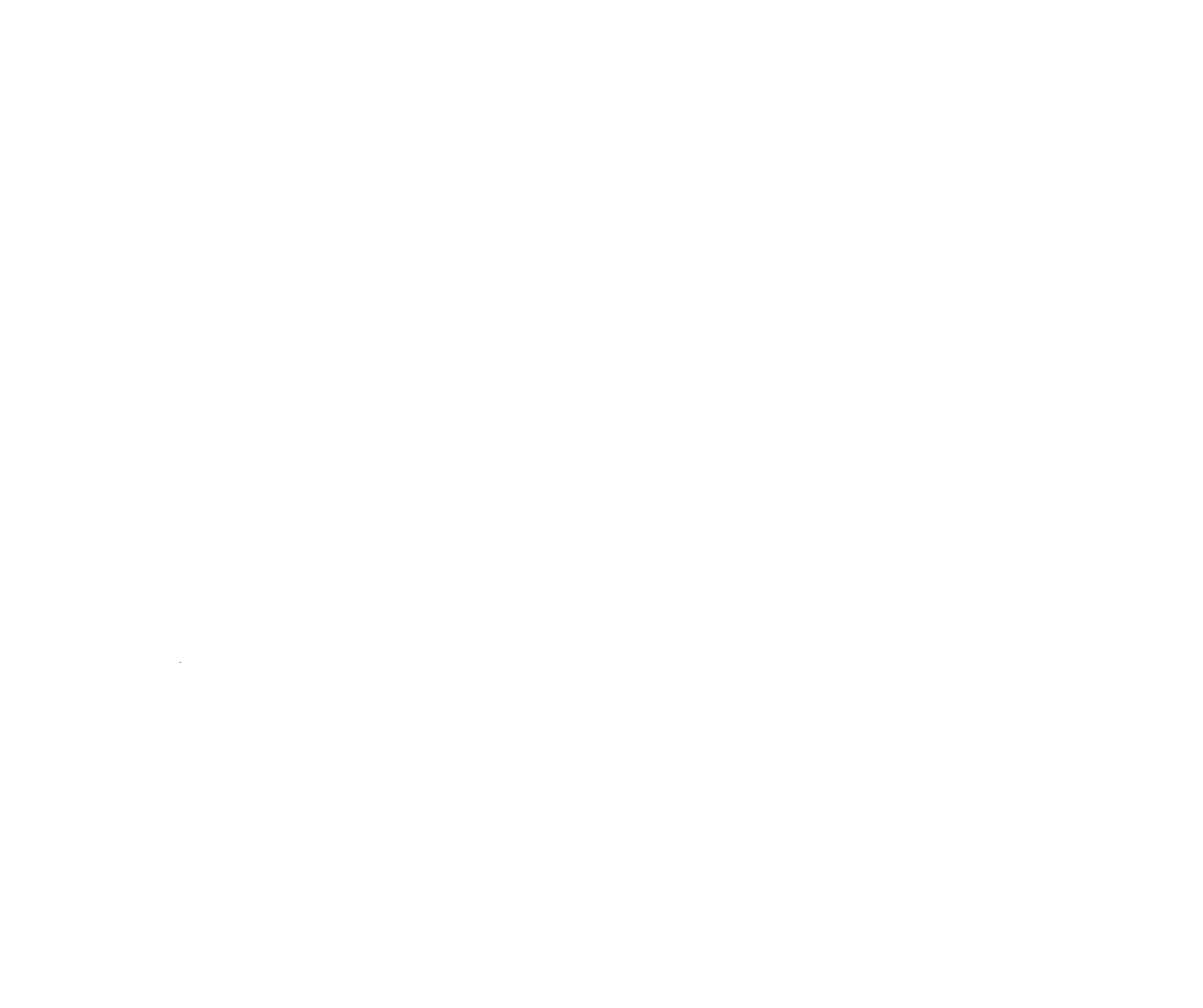
30 Nov That doesn’t look right…… Summer infections!
Summer often means sweaty feet and public swimming pools, both of these can be an environment for organisms that may cause skin and nail issues on the feet.
Toe nail fungus (or nail rot)
Toe nail fungus is caused by a type of tinea that can infect nails. A common reason why nails become infected is from trauma which creates an area for the fungus to opportunistically enter. The first thing to differentiate is if the thickened nail is due to trauma, fungal infection or a combination of both. Treatment can consist of topical ointments applied daily/weekly, thorough debridement and reduction of the infected nail and in certain cases oral medication. Any form of topical or oral medication needs to be used diligently and for 6-12 months as the new healthy nail grows.

Plantar warts
Plantar warts are caused by the human papilloma virus (HPV). This causes a raised corn like lump on the surface of the foot that is can be very tender to touch. Plantar warts can be generally differentiated from a pressure callous or corn by the “squeeze” test. It is more common for plantar warts to be tender when squeezed rather that from direct pressure. Multiple warts on one or both feet can be treated effectively by a form of needling to promote the body’s own immune system to fight off the virus. Other treatments can involve the use of cryotherapy or acids to burn through the layers of the wart tissue.

Tinea pedis
Tinea pedis is a foot infection due to a dermatophyte fungus. Tinea pedis thrives in warm humid conditions (sweaty socks/shoes, public swimming pool change rooms etc) and can effect anybody but is most common in young adult men. It has various patterns, may affect one or both feet and is typically very itchy.
In some cases Tinea pedis presents as clusters of blisters or pustules on the sides of the feet or insteps.
Less common Tinea presents as round dry patches on the top of the foot, this type is caused by a ringworm like tinea corporis.

Chronic hyperkeratotic tinea – patchy fine dry scaling on the sole of the foot
‘Moccasin distribution’ tinea – Is extensive hyperkeratotic tinea, in which the skin of the entire sole, heel and sides of the foot is dry but not inflamed
Athlete’s foot – Moist peeling irritable skin between the toes and is very common.
Treatment of tinea
The initial treatment of tinea pedis is easy – find an effective anti-fungal and use it as directed. It is important to continue to use the treatment for a period after the skin has healed as fungus creates spores and these can remain present after skin has healed.
It can return! Be sure to minimise risk..
Often the difficult part of treatment is avoidance of recurrence. Your podiatrist can provide you with several strategies to employ to minimise the risks of reinfection of Tinea pedis and other skin conditions.
Some of these include……
Using an antifungal treatment in your washing process
Regularly changing socks.
Ensuring shoes dry out after use.
Using an antifungal treatment within shoes.
Wearing footwear in public areas such as change rooms and around pool edges.
The bugs that cause tinea of the skin can also cause fungal infections in the toe nails see our info regarding onychomycosis/fungal toe nails on our website and blogs.
Summer is much more enjoyable without itchy feet, if you develop these symptoms see your podiatrist for best advice.
Mount Eliza 1300 776 055
Frankston: 03 8707 0830
Cheltenham: 03 9583 4000
